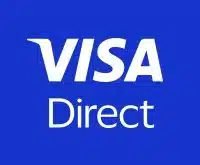Payments observers who think Venmo and Square Cash have locked up the Millennial crowd for peer-to-peer payments may have to reconsider. With the new advertising blitz it announced in late January, the bank-owned Zelle service is making it plain it plans to steal its share of this huge consumer market.
“The advertising for Zelle is focused on the Millennial and younger Gen-Xer,” says Norm Marranccini, director and vice president for payments marketing and adoption at Fidelity National Information Services Inc. (FIS).
Most especially those aged 25 to 32, he says, are “what the banks want.” Jacksonville, Fla.-based FIS processes for financial institutions and serves as one of several companies linking client banks to the Zelle network.
One commercial depicts a young man, portrayed by 36-year-old singer and Broadway actor Daveed Diggs, agreeing to buy a work of art and then heading out to the bank to get cash for the purchase, while all around him, including the seller, admonish him to simply use Zelle.
PayPal Holdings Inc.’s Venmo, in particular, has won widespread popularity with younger users with its social-network features and fast transfers. A survey of more than 2,000 Millennials last April found that Venmo was far ahead of other mobile-payments apps in popularity, with 44% saying it’s the one they use most often.
Well behind, in second place, was “my bank’s mobile-payments app,” at 14%. LendEDU conducted the survey.
This audience is crucial for banks because it’s at younger ages that consumers form financial habits for a lifetime, says Marranccini, who was a banker before coming to FIS.
Now Zelle, which has so far recruited 60 financial institutions and commands a $40 million advertising budget, is concentrating its considerable marketing resources on younger adults in a way its predecessor, clearXchange, never did.
Already, Zelle is processing more volume than Venmo, despite the PayPal unit’s furious growth. The network handled $75 billion in payments last year, more than double the $35 billion racked up by Venmo, which did about half that volume in 2016.
It helps that some of the nation’s biggest banks, including JPMorgan Chase & Co. and Bank of America Corp., own the network. That has made Zelle, in Marranccini’s words, “the 800-pound gorilla that Venmo wanted to become.”
But Venmo has won its popularity among the coveted younger crowd not through advertising but through viral word of mouth, as Marranccini concedes. Indeed, usage spread so quickly among 20- and 30-somethings that the brand “Venmo” became a verb, as in “Just Venmo me the money.”
With that as the standard of success, one of Zelle’s aims is to become the new verb, not only for moving payments between people but also for disbursements from companies and organizations to consumers. “You can Zelle me the money,” is how Marranccini phrases it.
The irony of P2P payments is that, while they are a “must-have” for banks, as Marranccini says, they don’t make money, since most transfers are free. Even PayPal has been forced to find revenue for Venmo by enabling merchants to accept Venmo payments. Still, if a financial institution doesn’t offer the service, “the next bank will,” Marranccini says, potentially stealing customers.
A key advantage for Zelle over third-party apps like Venmo or Square Cash is that transfers take place directly between the bank accounts of the sender and the recipient, eliminating the need for the recipient to take a second step to move the cash from a brand wallet to his bank account.
But if Zelle hopes to win over Millennials, it may have to spiff up its mobile app, which is used by consumers whose banks have not yet integrated the service. In Apple Inc.’s App Store, for example, Zelle’s overall rating is 3.8 stars out of five, compared to 4.6 for Square Cash and 4.8 for Venmo. For his part, Marranccini says Zelle’s rating has improved markedly in recent weeks, a trend he expects will continue.





